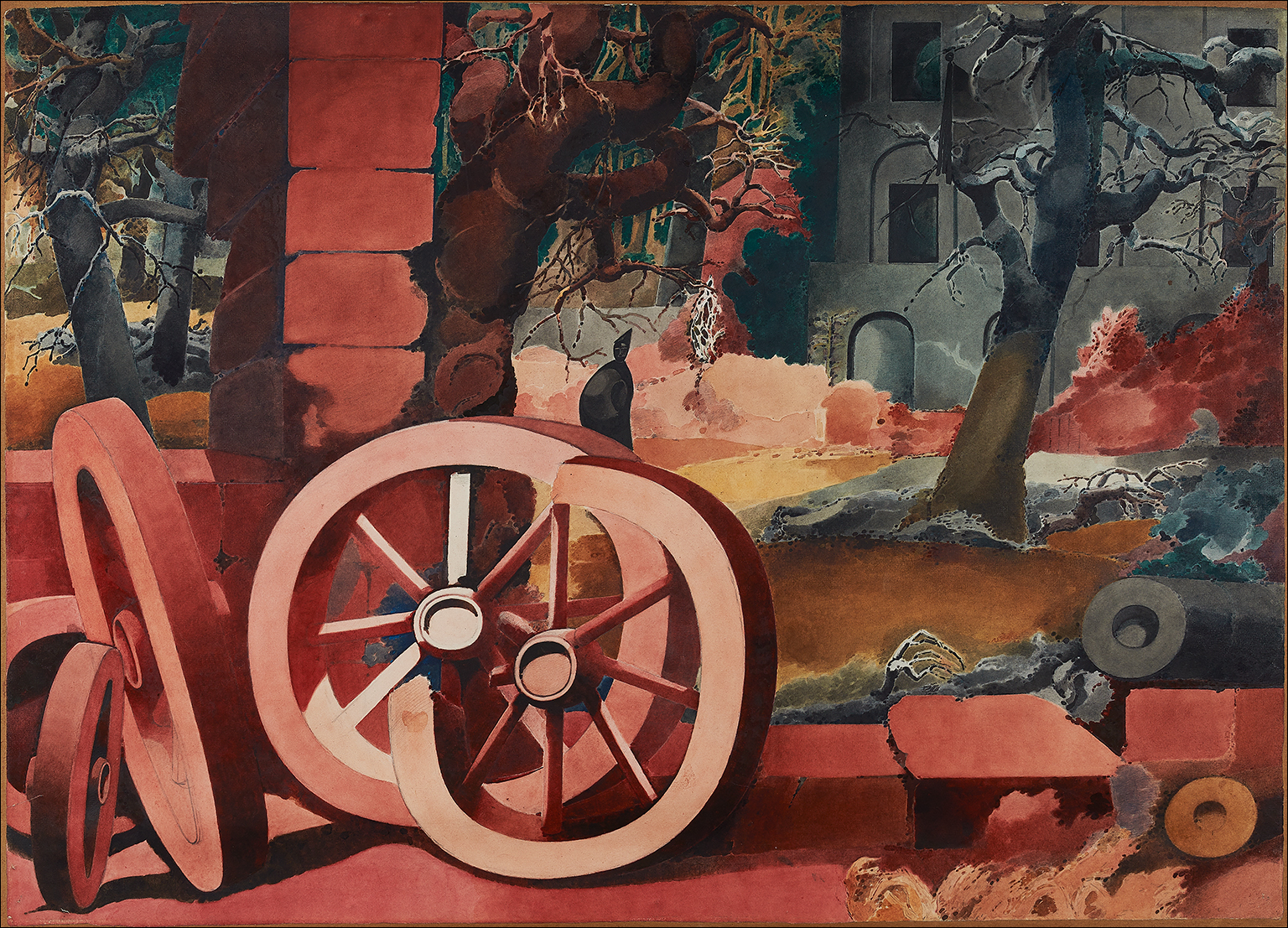© Estate of the artist c/o Lefevre, London
With its gnarled trees, ruined buildings and mysterious black-cloaked figure, Landscape with Red Wheels represents the work of Edward Burra at its most unsettling.
Burra grew up in Rye, Sussex, and trained at Chelsea School of Art and the Royal College of Art. Ill health from rheumatoid arthritis and pernicious anaemia made it difficult for him to stand for any length of time, so he concentrated on working in watercolour, a more speedy medium than oil paint.
During the 1930s Burra travelled to Spain and Mexico. His time in Spain coincided with the rise in tensions which led to the Civil War and he became acutely aware of the growing political divisions there. In Mexico he also experienced the effects of poverty and violence on the towns and cities. All this led to darker, more menacing undertones in his work.
It’s not clear exactly when Landscape with Red Wheels was painted, but the buildings and scenery appear to have been influenced by Burra’s disturbing experiences in Spain and Mexico, suggesting a date between 1937 and 1939. The picture was certainly in existence by 1942, when it was exhibited at the Redfern Gallery.
Burra is now most famous for his scenes of Harlem life, painted in the 1930s. But he painted many landscapes too, and the subject became a major theme in his last years.
The Laing Art Gallery has one of the best watercolour collections in the UK, with works by many of Burra’s contemporaries, including John Piper, David Bomberg and Graham Sutherland. Landscape with Red Wheels is the first work by Burra to join the collection.
Provenance
J. C. Thomson; Sir Robert Helpmann CBE, London, by 1973; Private Collection, 1987; The Isabel Goldsmith-Patiño Family; Sold, Christie's London 2007; Sold Sotheby's 2017.
